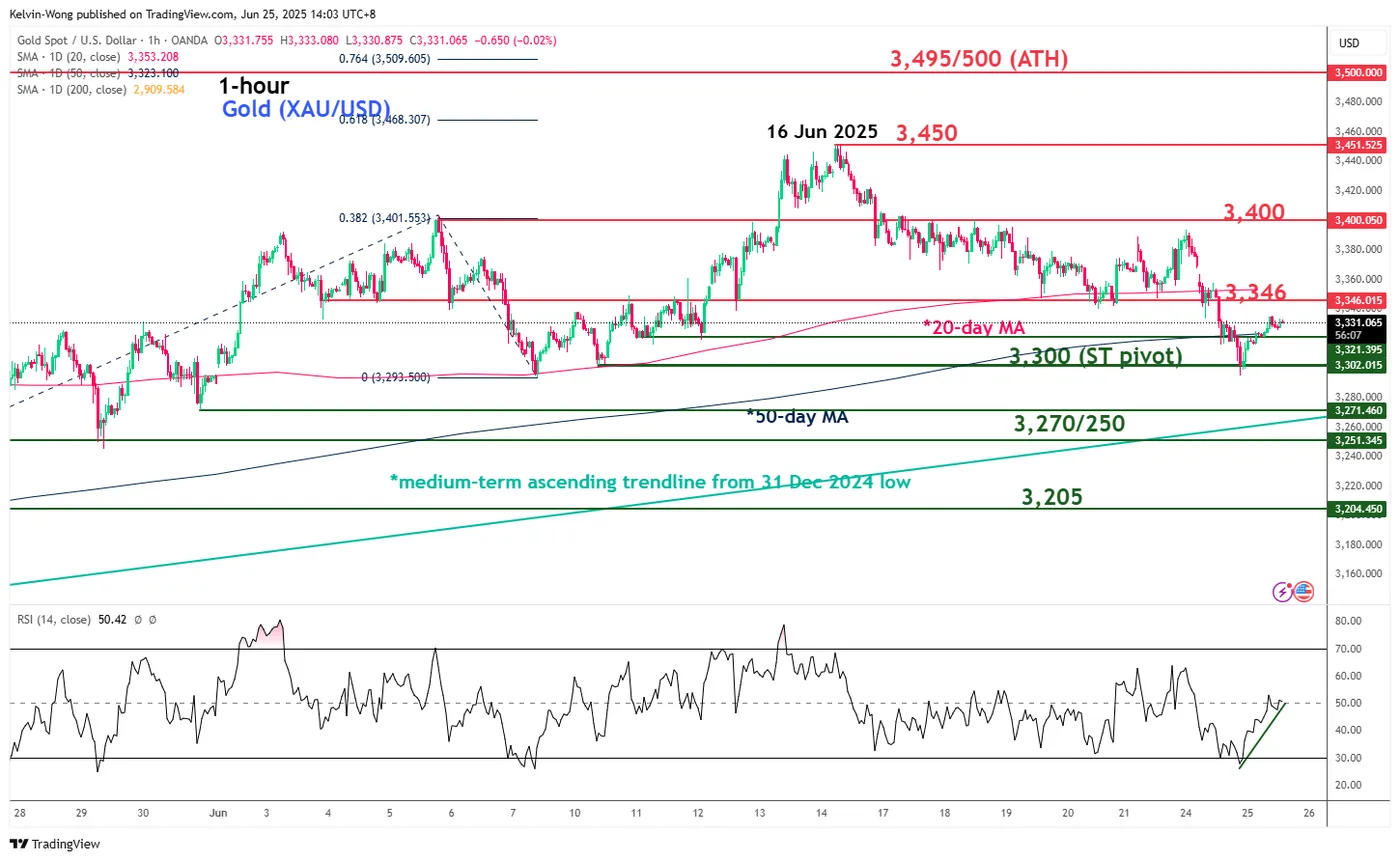Geopolitical risk premium continued to unwind across global financial markets on Tuesday, as risk-on sentiment gained traction following signs that Israel and Iran are now respecting a ceasefire deal brokered late Monday by US President Trump, despite earlier breaches from both sides.
The de-escalation of the 12-day Israel-Iran conflict also drove a sharp bearish reversal in oil prices. extended its losses from Monday, 14 June, registering a two-day decline of -15.3% to trade at US$66.05/barrel—effectively erasing the geopolitical premium and returning to pre-conflict levels.
Softer Oil Prices and Fed Powell’s Dovish Hint Reinforced Risk-On Sentiment
The retreat in oil prices has helped ease stagflation concerns, providing a tailwind for global equities. With reduced inflationary pressures, central banks may now find more room to implement expansionary monetary policy if needed.
In his testimony before US Congress, Fed Chair Jerome Powell added to the dovish tone, stating, “If it turns out that inflation pressures do remain contained, then we will get to a place where we , sooner rather than later.” His comments echoed recent remarks by Fed Governors Waller and Bowman, who have hinted that rate cuts could begin as early as July, earlier than current expectations reflected in Fed funds futures, which price in a first cut at the September FOMC meeting (CME FedWatch tool).
Powell’s dovish comments reinforced the risk-on mood. Major US stock indices closed sharply higher, led by the high-beta , which surged 1.9% to retest its all-time intraday high of 22,222—despite a weaker-than-expected print for May (actual: 93.0 vs consensus: 100.0, prior: 98.4).
The Greenback Drifted Lower, With the US Dollar Index Just a Whisker Away From a Critical Support Level
The continued to weaken. The recorded a second straight daily loss, falling -0.4% on Tuesday to close at 97.97 after rejecting its 50-day moving average. It now hovers just above a key long-term support at 97.40; a weekly close below this level could signal the start of a multi-month downtrend for the greenback.
In today’s Asian mid-session, the dollar remains under pressure. The high-beta and are outperforming, up 0.3% and 0.1% respectively, followed by modest gains in the and .
Gold Stabilizes at the 50-Day Moving Average
Gold () has started to stabilize after Tuesday’s 1.36% decline, which saw it close at US$3,323 following a breach of its 20-day moving average support at US$3,350. The yellow metal is currently up 0.3% intraday to US$3,333 after rebounding off its 50-day moving average at US$3,300, supported by a weaker US dollar and softer long-term Treasury yields.
Economic Data Releases
Fig 1: Key data for today’s Asia mid-session (Source: MarketPulse)
Chart of the Day – Potential Minor Recovery for Gold (XAU/USD)
Fig 2: Gold (XAU/USD) minor trend as of 25 June 2025 (Source: TradingView)
The minor corrective decline of -4.5% seen in Gold (XAU/USD) from its 16 June 2025 high to Tuesday, 24 June 2025 low has stalled and reversed upwards from the 50-day moving average.
In addition, the hourly RSI momentum indicator has rebounded back above the 50 level after hitting its oversold region on Tuesday, which suggests a revival of bullish momentum at least in the short term.
Watch the US$3,300 key short-term pivotal support, and a clearance above the US$3,346 near-term resistance (also close to the 20-day moving average) sees the next intermediate resistances coming in at US$3,400 and US$3,450 (see Fig 2).
However, failure to hold at US$3,300 invalidates the recovery scenario to extend the corrective decline sequence towards the next intermediate support at US$3,270/3,250 (also the medium-term ascending trendline from 31 December 2024 low).
